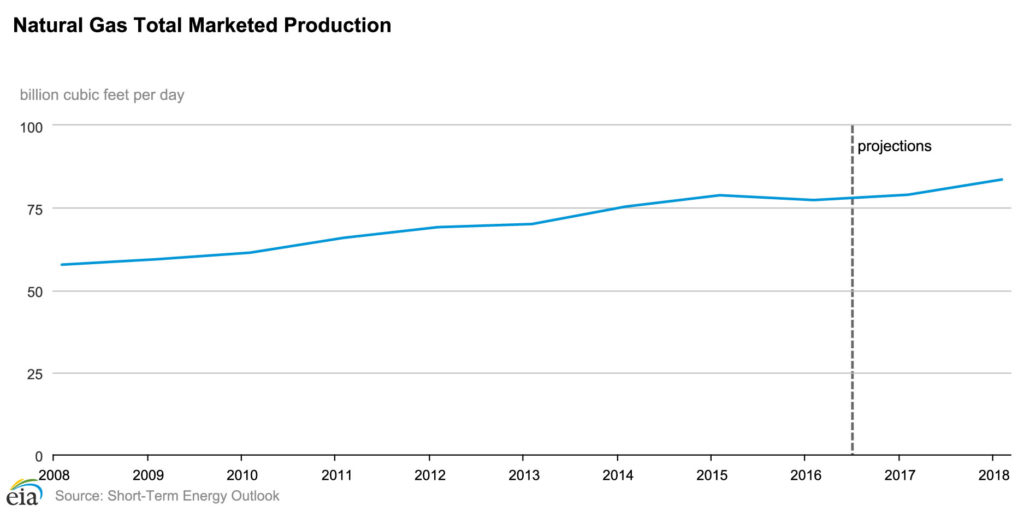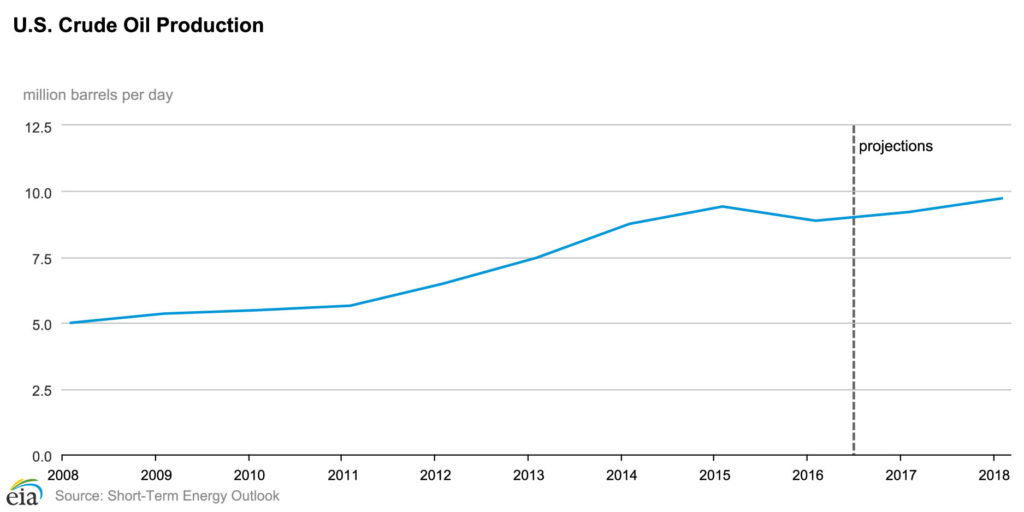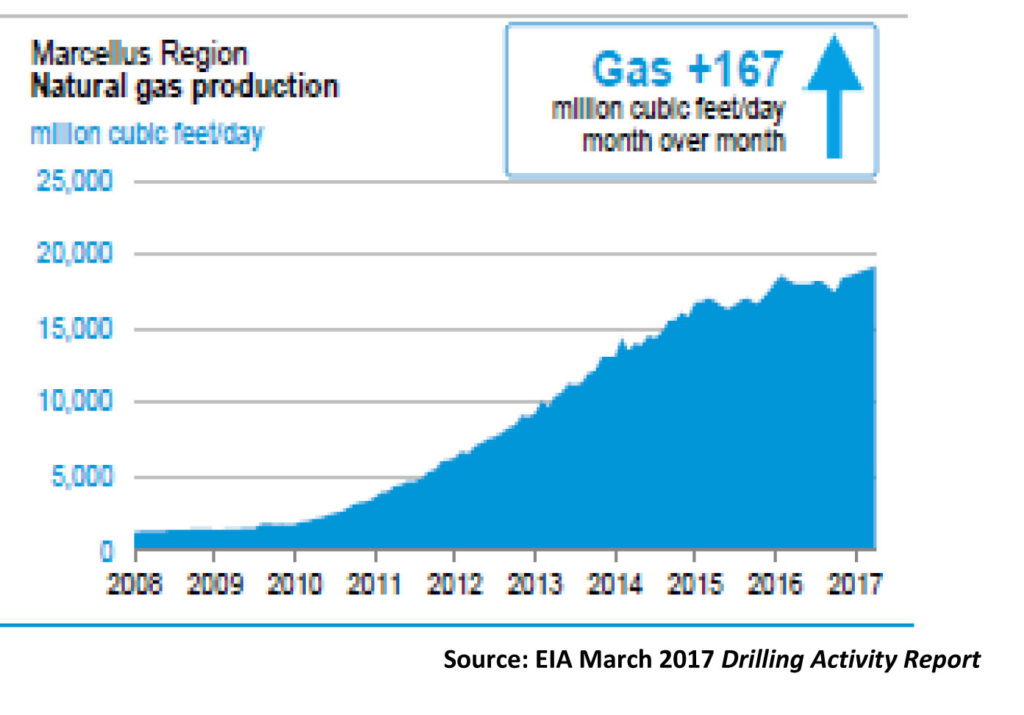“You’re going back to work.”
With that rhetorical flourish, President Trump signed his much-ballyhooed and loftily-titled executive order “to create energy independence.”
The president’s words—directed to a group of coal miners at the signing ceremony—may have made for great TV (and the president certainly has a knack for that), but that’s about it. The coal mining jobs aren’t coming back, and anyone willing to take a factual look at the current trends in the U.S. electric power sector knows that.
The order, essentially the new administration’s effort to undo any and all climate change-related plans put forward by the Obama administration (the Clean Power Plan in particular), is chock-full of assertions about the U.S. energy industry that are, at best, little more than wishful thinking. Let’s take a look.
First, turning to coal, it is clear that the electric utility industry’s transition to sustained and significantly lower coal use is not going to change (and just to be clear, the utility industry is essentially coal’s only market, consuming roughly 90 percent of overall production in 2016). I covered this issue closely in a post late last year after the November election (see my story here)—the overall utility mood then was that the industry was moving toward natural gas and renewables to meet new demand. Nothing has changed since to alter the industry’s direction; even knowing that the executive order was on the way, companies have continued to announce plans to shutter existing coal units.
For example, just days before the presidential order was signed, Owensboro Municipal Utilities announced that it intended to close its two-unit coal-fired Elmer Smith station, with the first of the two generators slated to shut down by 2019 and the second four years later. Owensboro is a small utility, serving just 26,000 customers, meaning its decision might otherwise get lost in the wash—but it is located in western Kentucky, in the heart of the state’s coal country. Even so, there will be no coal in Owensboro’s future.
In a story by Rhonda Miller of Western Kentucky University Public Radio, utility spokeswoman Sonya Dixon said that studies done by the utility showed coal was no longer the least-cost option for the municipal utility. “This is a monumental change in the way that OMU has done business,” she told Miller. “You know, we have burned coal for the last 117 years and obviously, this is a shift, but we feel it’s a positive one in the best interest of our customers.” [Emphasis added.]
And Owensboro has plenty of company. NV Energy earlier this month shut down the final unit at its Reid Gardner generation station northeast of Las Vegas. The four-unit, coal-fired facility originally was able to generate 557 megawatts of power; three 100 MW units at the site were shut down in 2014. The fourth unit was pulled offline March 16th—nine months ahead of schedule.
In a press release, NV Energy said the closure “represents a significant step in achieving a less carbon intense energy future consistent with the policy objectives of Nevada.” Starla Lacy, vice president of environmental services for the utility, added: “We are proud to be moving our state toward a more balanced and less carbon intense generation portfolio through coal generation retirement and renewable energy development while keeping prices low for our customers.” [Emphasis added]
The projects aren’t related, but it is worth noting that as NV Energy was pulling the plug on the Reid Gardner station, developers of a 250 MW solar power plant on the Moapa River Indian Reservation were holding a commissioning ceremony for their facility, which will provide power to the Los Angeles Department of Water and Power. The two power plants are separated by perhaps 20 miles of Interstate 15, but are light years away from each other in outlook—one moving toward the future, the other stuck in the past, much like the Trump administration.
Another provision in the executive order, perhaps the most fact-challenged section of the entire proclamation, lifts a moratorium on issuing new coal mine leases on federal lands—implying that coal supply somehow is part of the problem…. The fact is that in 2016 coal production totaled just over 738 million tons, down from a little more than 1 billion tons in 2014. Clearly there is plenty of supply to go around; opening up additional lands for potential development is not going to have any impact on the industry’s outlook.
One of the key reasons for the movement away from coal has been the sharp increase in natural gas production over the past decade—another fact that seems to have gotten lost in the alternate reality of the new executive order. In his remarks before signing the order, President Trump said that one of the goals of his initiative was to “unlock job-producing natural gas, oil, and shale energy”—paying no mind to the revolution that has occurred in the oil and gas industries since 2008 (coincidently or not the year former President Obama was elected).
The charts below are pretty self-explanatory, and show strong growth in both oil and natural gas output during the past eight years—belying assertions that the industries have been held under lock and key by green-loving Democrats. I have written about this previously (see here) and one of my favorite indicators of the changes during the past decade can be seen in the third chart below, which highlights the development of what is in essence an entirely new industry, natural gas produced through horizontal drilling and fracking. From essentially nothing in 2008, production in the Marcellus shale region has soared to almost 20 billion cubic feet of natural gas daily currently—accounting for roughly 25 percent of total U.S. output.
Predictably, that higher output put a lid on prices and since 2009 the cost for natural gas delivered to the nation’s electric generating plants has been at or below $5 per million British thermal units (Btus) according to the Energy Information Administration. For utilities, the decision was an easy one: With abundant supplies and low and stable prices, natural gas quickly became the fuel of choice.
The surge in renewables over the past 10 years has further clouded the economics for coal, as I have explored in previous posts (see here and here).
So today, we are forced to watch as the new administration and its friends from the fossil fuel industry try to conjure up an alternative present in which the past 10 years of energy development didn’t actually occur and magically return coal to its much-trumpeted glory days. Fortunately, wishful thinking isn’t going to change cold, hard facts.
–Dennis Wamsted
P.S. In case you were wondering—coal’s “heyday” wasn’t really a great time to be a miner either. From 1980 to 2008 coal production rose by 342 million tons, climbing from 829 million tons to 1,171 million tons, a 41 percent increase. During the same period, the number of miners dropped by half, falling from the 160,000 mark to roughly 80,000—hardly an era to put on a pedestal.



 Follow
Follow
This is remarkable–using the facts to commnet on policy! How refreshing. It should also be noted that the Sierra Club recently said in a press release that since it started its “no more coal” [or something like that] campaign in 2010, 250 coal plants have been shut down or scheduled to be shut down.